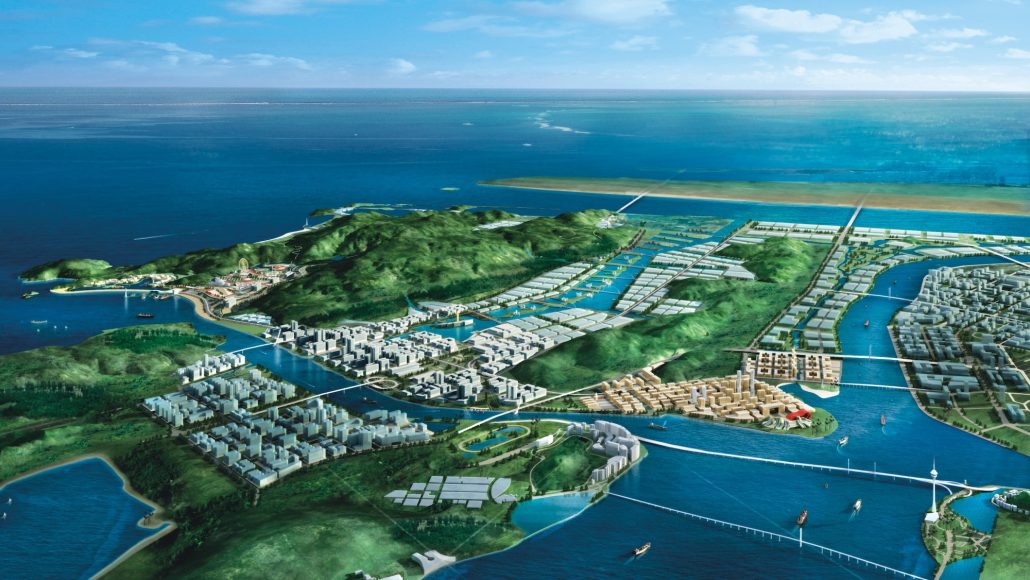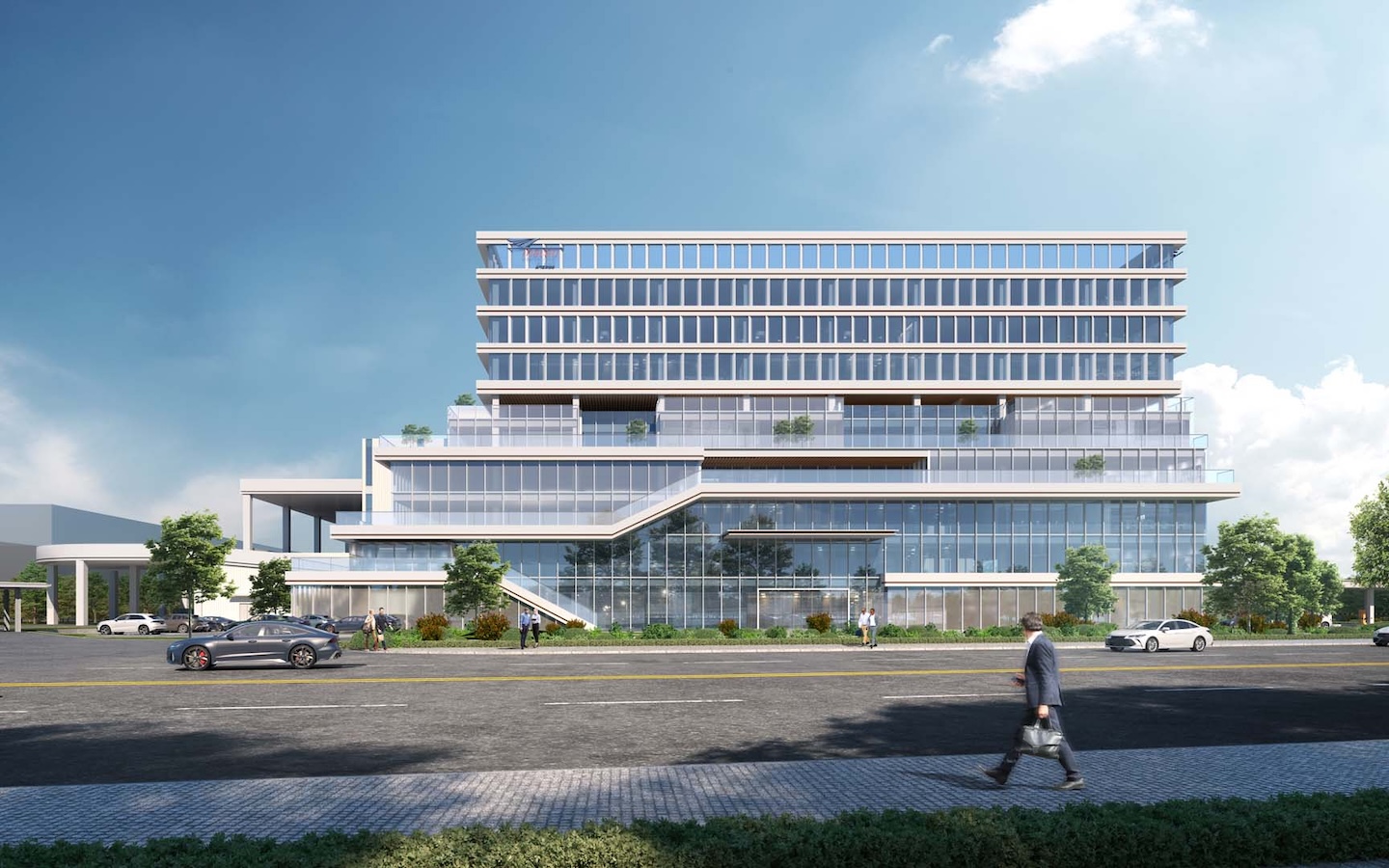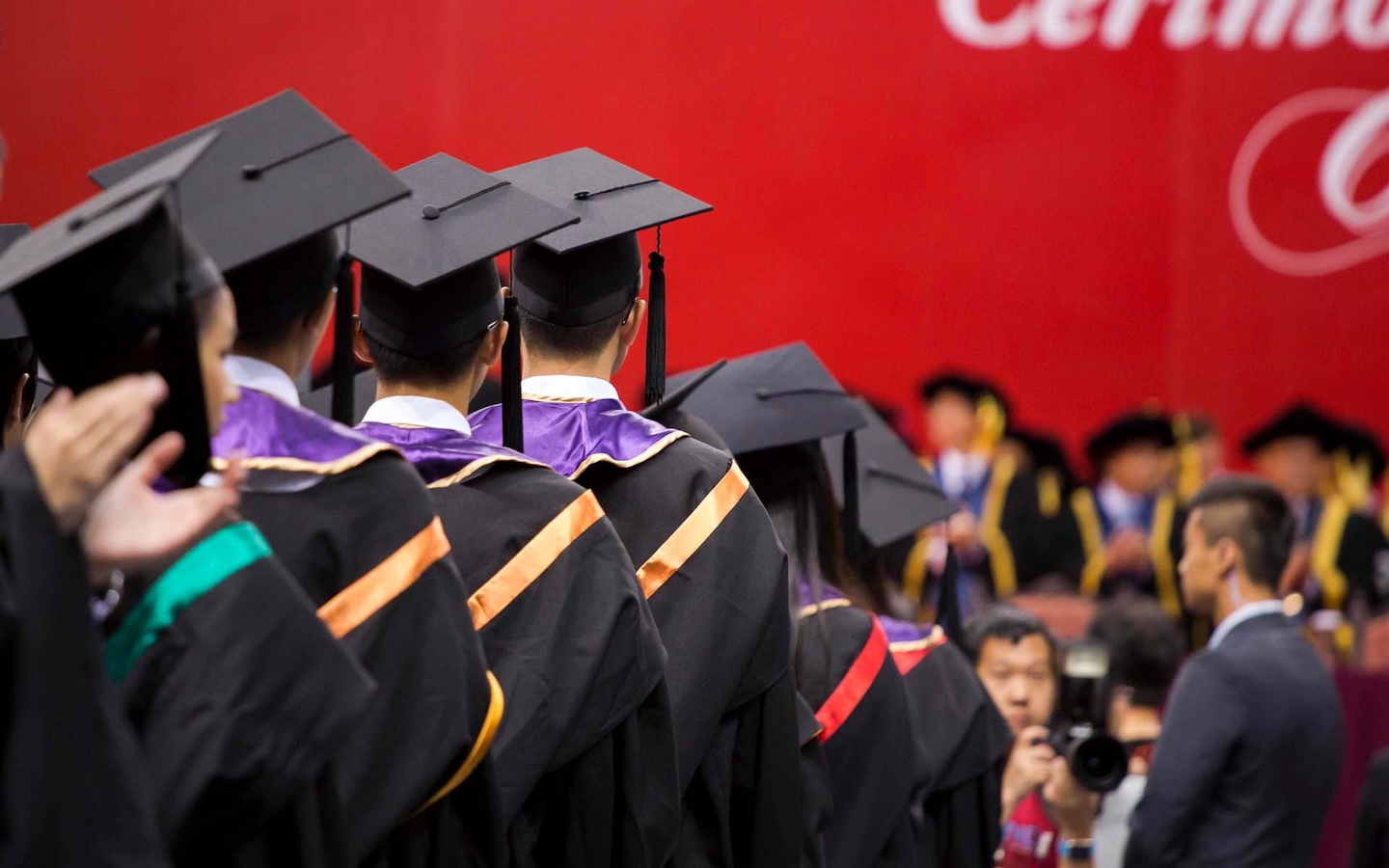The Free Trade Area (FTA) of Hengqin has received approval from the State Council to double its land area and promised a warm welcome to projects from Macao.
In early December, 2015 Niu Jing, director of the Hengqin New Area Management Committee (HNAMC), announced that it had received approval to land-fill an area of 27.9 square kilometres of sea off the southern tip of the peninsula in Zhuhai; it is the closest part of the mainland to Macao.
That is almost equivalent to the entire land area of Macao, 30.3 square kilometres, and equal to the 28 square kilometres of land being developed in the existing Hengqin FTA.
This dramatic announcement was evidence of the popularity of an area that was established only in 2009, when it had a population of a several thousand farmers and fishermen. Now it is a giant construction site, with hotels, apartment buildings, offices, factories and holiday resorts rising out of the earth like mushrooms after the spring rain.
The expansion is necessary because demand for land in the FTA has greatly exceeded supply. “Companies from Macao and Hong Kong can have unlimited use of land in Hengqin,” said Niu. “The key is to see their projects. Good projects will certainly receive adequate support.”
The district has grown at breakneck speed since it was established as a New Area in 2009 and since it was declared one of three Free Development Experimental Areas in Guangdong province in April 2015, together with Nansha and Qianhai.
According to HNAMC figures, as of the end of November, 14,585 firms had registered in Hengqin. Of these, 1,097 were from Macao and Hong Kong, including 875 from Macao and 222 from Hong Kong; these are involved in commercial services, retail and wholesale, culture and creativity, tourism, hotel and leisure.
Integration accelerates
Its integration with Macao is proceeding rapidly. On 18th December 2014, the two opened a 24-hour border at the Lotus Bridge, to facilitate the movement of people and goods. Since then, the flow of both has increased by more than 30 per cent.
One result is that Macao people have started to buy residential properties near the border, from which they can commute easily.
According to HNAMC figures, Hong Kong and Macao people have borrowed more than US$150 million to buy property in Hengqin and applied to conduct cross-border RMB business exceeding 2.56 billion yuan.
Property prices in Hengqin are the highest in Zhuhai, but still less than half the average in Macao.
The Zhuhai government will soon approve the entry of cars with Macao licence plates to drive in Hengqin without having to apply for a mainland licence.
The HNAMC is building a checkpoint at the northern end of Hengqin, next to a bridge that connects it to the rest of Zhuhai. The Macao cars will be allowed to circulate in all of Hengqin but not to cross the bridge.
Despite the rapid growth of Hengqin, the vast majority of Macao people are unwilling to move there. They say that transport links are not convenient and the supporting infrastructure of shopping, schools, hospitals and other facilities are not in place. They say that their families, work and lives are in Macao. So most of those who are moving are those who cannot afford to buy an apartment in Macao.
Expansion
The expansion is a dramatic increase in the size of the area. While the State Council has given its approval in principle, the proposal must still be evaluated by environmental exports and the State Ocean Administration.
While Hengqin has a total land area of 106.46 square kilometres, most of it is hilly and not suitable for economic development. Only 28 square kilometres is being used for development. So the expansion is equivalent to a doubling of the current area.
Experts say that the landfill of the sea is not technically difficult.
The decision is a sign of the enormous demand for land from companies all over the mainland, not to speak of Macao and Hong Kong and overseas, and the fact that there is insufficient supply of it.
This demand has intensified since the announcement that Hengqin is one of the three Free Trade Experimental Zones in Guangdong. Niu said that, from the end of 2009 to 2014, 8,000 companies had registered.
“In the first 10 months of this year, more than 4,000 registered,” he said. “The attraction of the free trade zone to companies is extremely great and the collective effect is very evident. This is especially the case with financial firms. In 2012, one financial company came and now we have more than 1,600.”
In the northeast of the island is the Shizimen Central Business District, which involves a total investment of 36 billion yuan. Office blocks have been built and China’s major banks have opened there for business.
According to preferential policies approved by the State Council in July 2011, financial institutions in Hengqin can set up offshore foreign currency business and trust funds and do currency conversions for individuals.
According to figures from the HNAMC, as of the end of November 2015, 1,770 financial firms had registered in the area; they had a registered capital of 183 billion yuan and capital under management of 1.5 trillion yuan.
On 11th December 2015, the People’s Bank of China announced that the yuan would be freely convertible for corporations registered in the free trade zones in Guangdong, Fujian and Tianjin; this includes Hengqin. There are several conditions; one is that the firms are not involved in sensitive industries on the government’s ‘sensitive’ list and the total to be converted in one year may not exceed US$10 million.
Who will get the land?

What is driving the expansion is the need for more land to accommodate the many projects under construction or planned in Hengqin.
The four strategic areas are a national food security innovation centre; an international Internet creativity centre; a national traditional Chinese medicine modernisation science and technology centre; and a high-technology culture and creativity city.
For example, as part of the culture and creativity city, Lai Fung Holdings and eSun Holdings, both part of Lai Sun Group of Hong Kong, are investing in an “Immersive Experience Centre,” with 22,000 square metres in ‘Creative Culture City’ in Hengqin. The city involves a total investment of 22 billion yuan and will include a hotel, performance halls, workshops, e-sports gaming area and other entertainment facilities.
There are, in addition, large leisure, resi-dential and commercial projects. Shun Tak has invested 721 million yuan to buy 23,834 square metres of land to build an office, hotel, commercial and service apartment complex in Hengqin close to the border. Galaxy Entertainment is investing 10 billion yuan in a luxury Maldives-style holiday resort on 2.7 square kilometres in the southwest, with a shoreline of 2.5 square kilometres.
The biggest project, up and running since March 2014, is the Chimelong Ocean Kingdom, the world’s largest water theme park that opened in March 2014 at the southern tip of Hengqin. It includes one of the world’s large aquariums, with rare whale sharks, beluga whales, polar bears and other exotic animals.
According to official figures, it has so far attracted 20 million visitors, of whom 10 per cent come from Macao, Hong Kong and overseas.
In early December 2015, Chen Jie, president of Chimelong Group (Zhuhai district), told the Second Global Conference of the Cantonese in Zhuhai that his company intended to invest 50 billion yuan in five more theme parks to be built on an adjacent site in Hengqin. Its aim is to attract 50 million tourists a year, he said.
The themes of the parks will be physical education, films, performances, rare animals and science. “The construction of these theme parks will create a world-level national tourism brand, implement the national strategy for Hengqin and bring new development to the area as ‘an international tourism island’, working with Macao toward its objective of being a world travel and tourism centre,” he said.
The University of Macau is using a site of 1.1 square kilometres in Hengqin as its new campus; the area is under Macao law.
The HNDMA has set aside an area of 4.5 square kilometres as a joint Guangdong-Macau industrial zone. The Macao government has proposed 33 projects in the park, with a total investment of 140 billion yuan. The administration has also established a centre for innovation projects with young Macao entrepreneurs; 90 such companies have moved in.
The announcement in April 2015 of Hengqin’s new status has only intensified the demand for space. No wonder it wanted to create new land.
Role of Macao and Hong Kong
In announcing the new land, Niu was at pains to stress the important role played by Macao and Hong Kong in the area.
He said that negotiations on Macao cars entering the zone were proceeding smoothly and had entered their final stage. “This policy will be implemented shortly,” he said.
“Concerning the border, Hengqin will in future promote a model of ‘co-operative inspec-tion, one-stop tourism’,” he said. The aim is to shor-ten the border-crossing time for Macao residents.
Another policy to attract Macao and Hong Kong residents is an income tax rate of 15 per cent, the same as they pay at home.
Niu said that the area was working to bring its administrative system closer to that of the two SARs, to facilitate investment by their companies. “In the mainland, we have many management rules and regulations that do not exist in Macao and Hong Kong.” His staff are working on a new set of legal regulations to address this problem.
The HNDMA has set up offices in Hong Kong, Spain and Mexico and plans more in Brazil and Chile, to attract investment.
The doubling of Hengqin’s land area is good news for Macao; it will offer its companies and people more opportunities for investment, property, leisure and enjoyment.
But it will have to compete with investors from all over the mainland, not to speak of foreign firms, who want a piece of this valuable piece of real estate. The competition will be intense.



